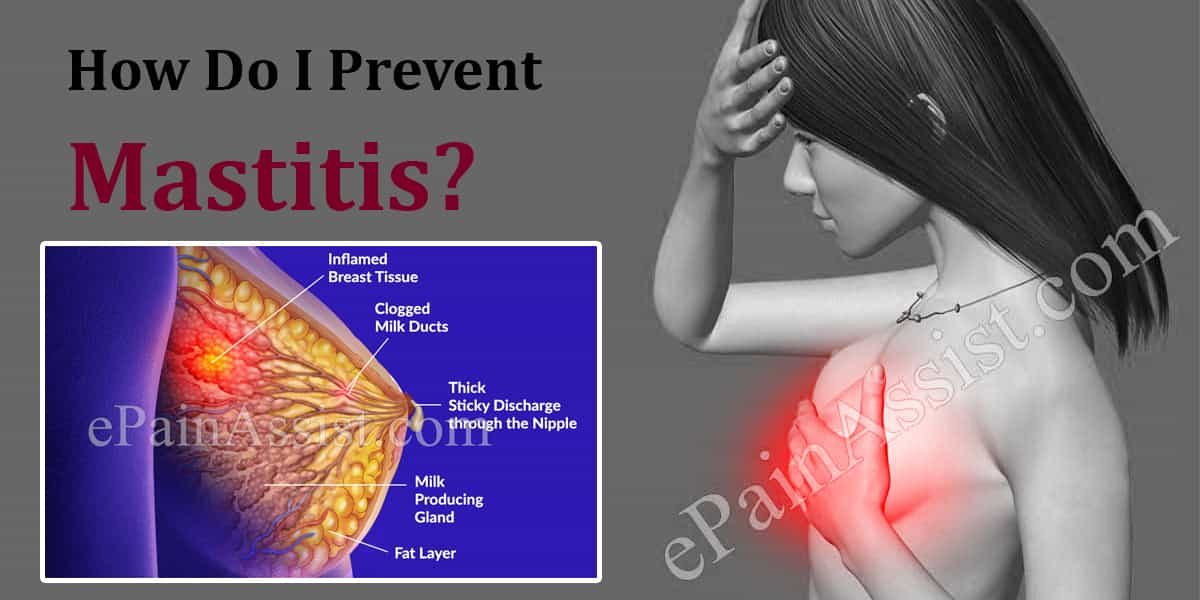How Do I Prevent Mastitis?
Mastitis can be prevented by identifying the risk factors and preventing the risk factors.
Following The Correct Breastfeeding Technique – Mastitis can be prevented by avoiding the risk factors above. Commonly lactating women get mastitis, and the reason for this is poor breastfeeding technique. Mastitis is common in women with their first child as they don’t have previous experience in breastfeeding and if they were not thought the proper technique this can lead to mastitis.
After the delivery the nurse/midwife should explain about the importance of breastfeeding, show the correct technique and the importance of following that technique. Mother should be educated on the consequences that can occur to the baby and to her if proper breastfeeding technique is not carried out. Before leaving the hospital the breastfeeding technique of each mother should be checked. A single education and counseling session is not adequate to prevent mastitis; therefore continuous support regarding breastfeeding is needed. There are consultants who are specialized in lactation and advice from these consultants can be valuable. Breastfeeding pillows can help to maintain a good position. With proper technique cracked, sore nipples can be prevented.

Breastfeed Regularly: Regular breastfeed is important to prevent mastitis. Do no miss feeds as this can cause clogged ducts. Try to breastfeed regularly. Breastfeed from each breast alternatively to avoid milk stasis in one breast. Try to remember from which breast you breastfed the previous time (you can put a safety pin on the bra which you gave milk this time, so that the next time you should give milk from the other breast). Breast massage is another way to avoid clogged ducts.
Avoid Wearing Tight Bra’s And Clothes: Tight bras, bra’s with wires, breast pads and tight clothes can cause clogged ducts. So avoid tight undergarments, clothes and prolong use of breast pads. Sleeping on your stomach can give rise to clogged ducts, so sleep on your back or side.
Good Hand Hygiene: Wash your hands before breastfeeding and after changing nappies. If a nurse is helping you out, she should also wash her hands before touching the nipple. After the breastfeed gently wash the nipple with lukewarm, soapy water and dry it completely.
Do Not Pierce Your Nipples: Nipple piecing creates an easy entry point for the organisms to get into the breast especially if you have a history of mastitis and if you are closer to menopause do not pierce your nipples.
Avoid manual breast pumps
Have a healthy, balanced diet
Avoid applying ointments and cream to the nipple.
Risk Factors For Mastitis
We will see what are the risk factors for mastitis include:
- Cracked nipples
- Sore nipples
- Infrequent feeds
- Missed feeds
- Poor attachment to the nipple by the infant
- Nipple piercing
- Stasis of milk
- Tight bra’s (wired bra) and clothes
- Tight breast pads
- Use of a manual breast pump
- Poor maternal nutrition
- History of mastitis
- Cleft lip or palate
- Short frenulum in infant
There are many risk factors for mastitis except the conditions in the infant such as cleft lip/ palate and short frenulum, most of the other risk factors can be prevented.
Summary
Prevention of mastitis is focused on avoiding the risk factors. The risk factors for mastitis are cracked nipples, sore nipples, infrequent feeds, missed feeds, poor attachment to the nipple by the infant, nipple piercing, stasis of milk, tight bra’s and clothes, tight breast pads, use of a manual breast pump, poor maternal nutrition. Prevention methods include education and counseling session form women about breastfeeding and the importance of following the correct technique. Then her technique should be checked by the nurse/midwife and regular support should be given to breastfeed properly. Other prevention methods are regularly breastfeeding, avoid tight undergarments, clothes and prolong usage of breast pads; good hand hygiene, avoid nipple piercing, avoid manual breast pumps, have a healthy diet and avoid applying ointments and cream to the nipple.
